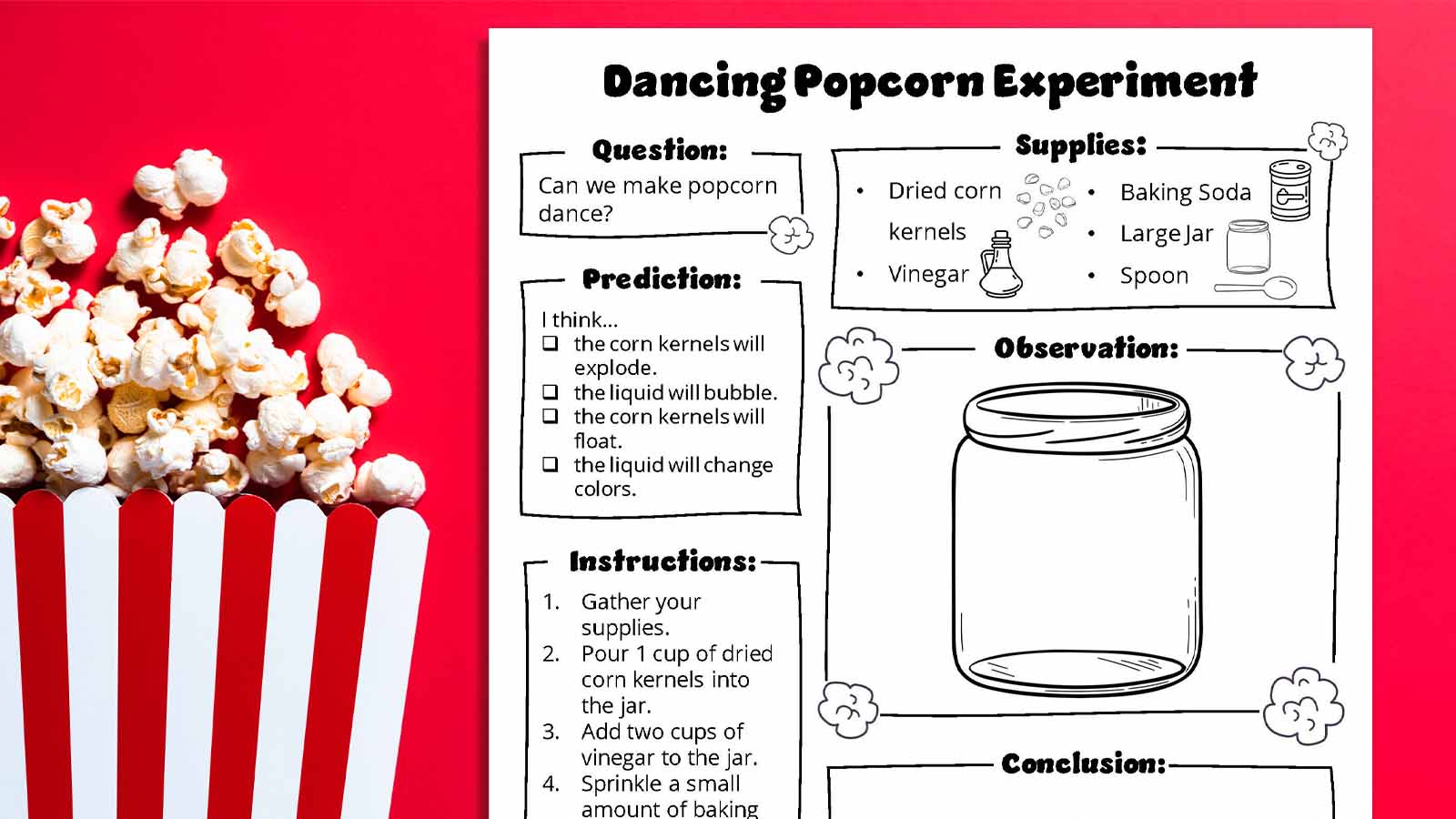This fun experiment will be sure to delight any kid (or adult)! In the dancing popcorn experiment, kids learn about simple chemical reactions using only a few ingredients found in most pantries. Read on to see how to do the experiment, and fill out the form on this page to grab your free recording sheet.
How does the dancing popcorn experiment work?
This science experiment produces carbon dioxide (CO2) gas when different chemicals are mixed together. The gas that is formed makes the popcorn kernels rise to the surface of the liquid. The kernels fall back toward the bottom of the liquid when the gas is released. The up-and-down motion of the kernels makes it appear that the popcorn is, as the name of the experiment implies, dancing!
What does the dancing popcorn experiment teach?
This very simple experiment teaches kids about density as well as acid-base reactions.
Is there a dancing popcorn video?
This video shows two different ways to do the dancing popcorn experiment, using slightly different ingredients.
Materials Needed
To do the dancing popcorn experiment, you will need:
Method 1:
- Clear vase or large jar
- Water
- Popcorn kernels
- Alka-Seltzer tablets
Method 2:
- Clear vase or large jar
- Baking soda
- Vinegar
- Popcorn kernels
Use our free recording sheet for the experiment too! Fill out the form on this page to get it.
Dancing popcorn experiment steps:
Method 1
1. Pour approximately 1 cup of dried popcorn kernels into a clear jar or vase. Note: You may need to alter the amount of each of the ingredients based on the size of the container you are using.
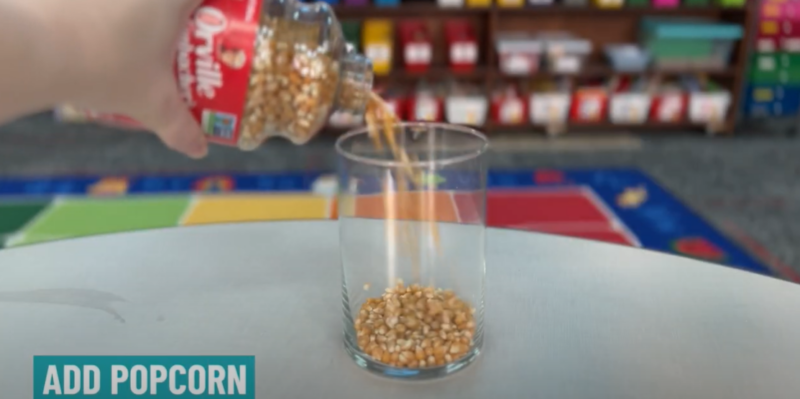
2. Next, pour approximately 2 cups of water into the container.
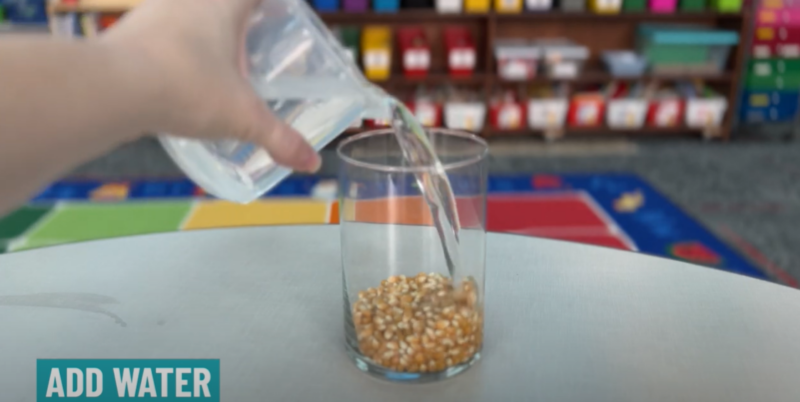
3. Drop in the Alka-Seltzer tablets.
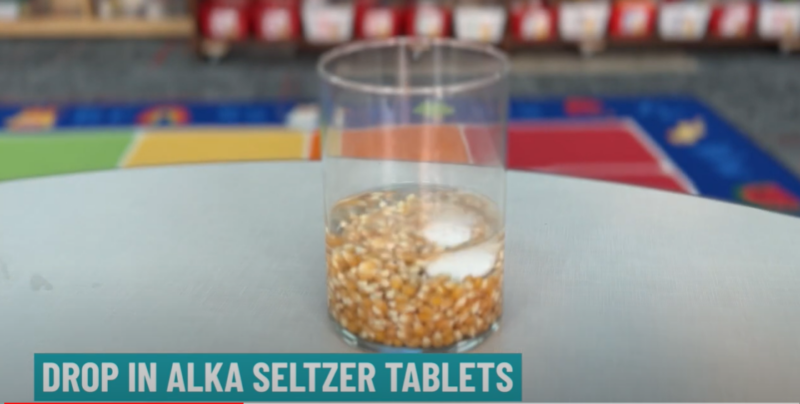
4. Finally, stir all the ingredients together.
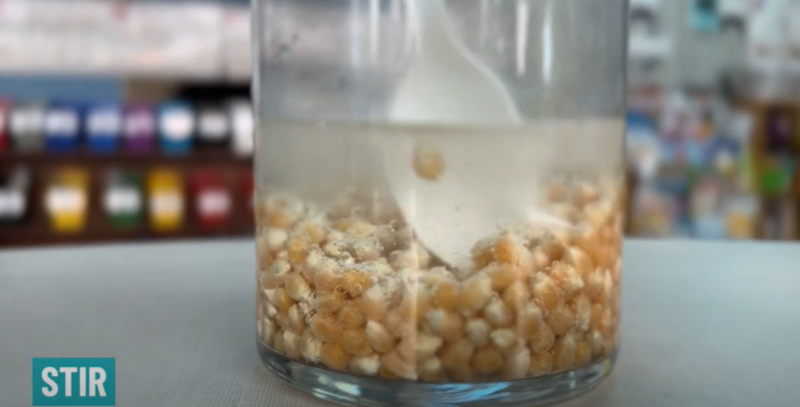
Method 2
1. Pour approximately 1 cup of dried popcorn kernels into a clear jar or vase.
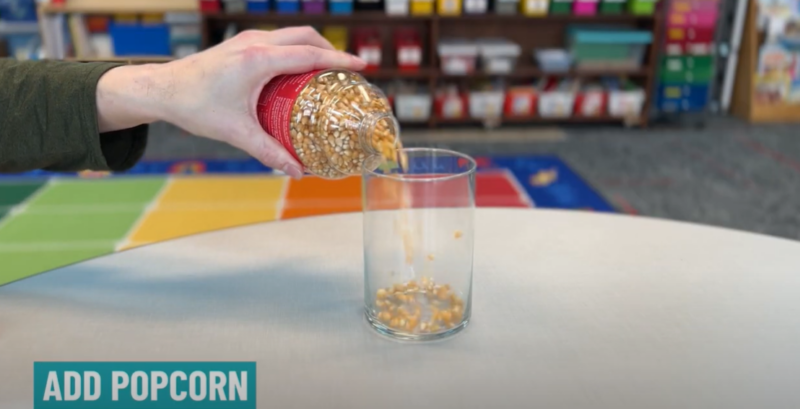
2. Next, pour in approximately 2 cups of vinegar.
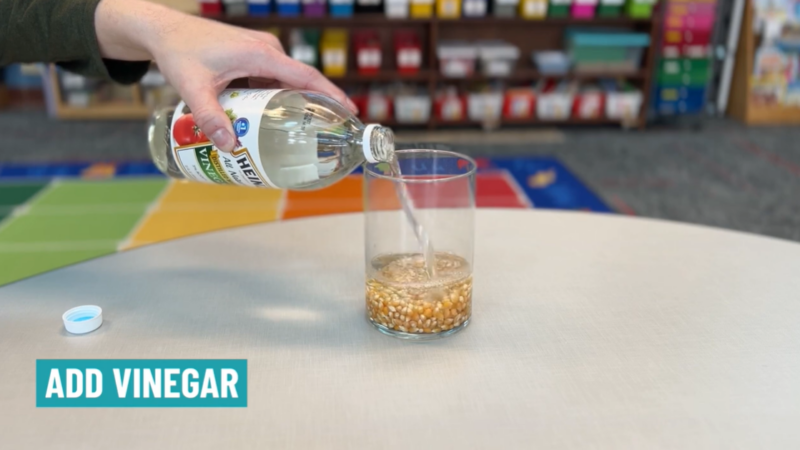
3. Finally, add in a tablespoon or two of baking soda.
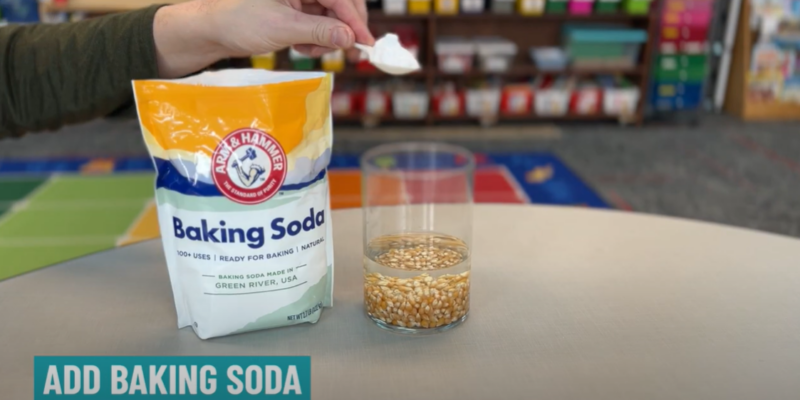
Grab our free dancing popcorn experiment worksheet!
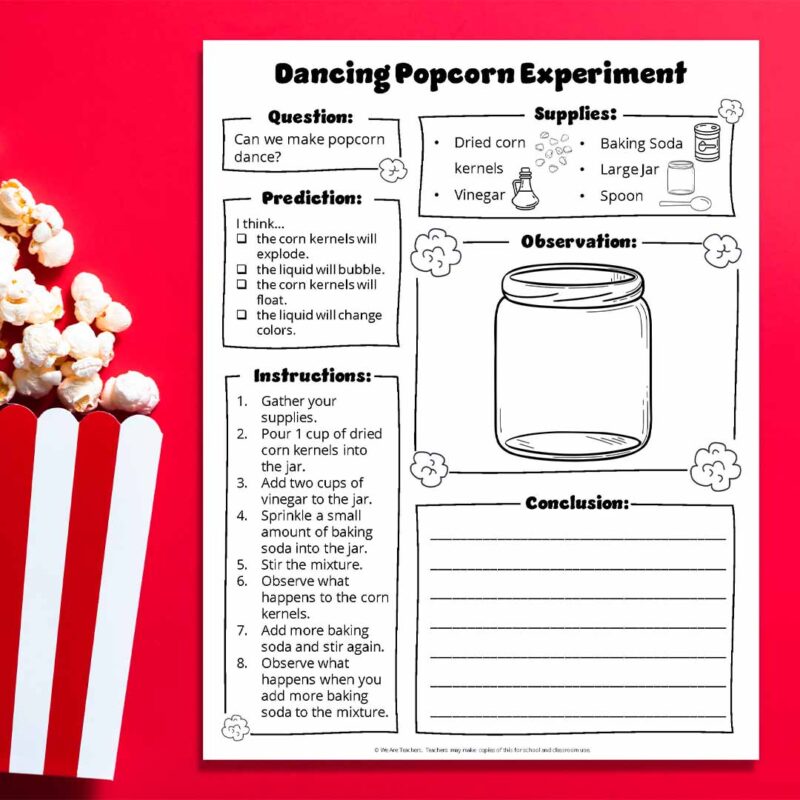
Fill out the form on this page to get your worksheet. The worksheet asks kids to guess the correct order of the steps in the experiment. Next, kids must make a prediction about what they think will happen. They can use the provided spaces to draw what happens before and after they add the dish soap. Did their predictions come true?
Additional Reflection Questions
- What happened when we added the Alka-Seltzer to the mixture in Method 1?
- What happened when we added the baking soda to the mixture in Method 2?
- What do you think causes the popcorn kernels to appear to dance?
- What do you think would happen if we added more or less baking soda to the mixture in Method 2?
- What do you think would happen if we used a liquid other than water in Method 1?
- What do you think would happen if we used a liquid other than vinegar in Method 2?
Can the dancing popcorn experiment be done for a science fair?
Yes! If you want to do the dancing popcorn experiment for a science fair, we recommend switching up some of the variables. For example: Does the amount of liquid matter? Does how quickly you add the Alka-Seltzer or baking soda matter? What about how slowly or quickly you stir it or what you use to stir it? Form a hypothesis about how changing the variables will impact the experiment. You can even dye the popcorn kernels rainbow colors ahead of time for a spectacular effect. Good luck!

